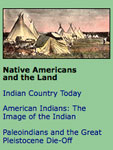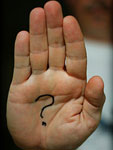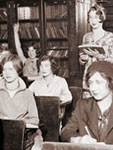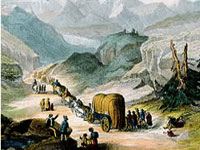Well, the Bill of Rights, in my opinion, is a very remarkable document because what it does is to summarize the colonists' concern over their legal rights that they were debating with the English government in the 1760s, but it also is a summary of the rights that are guaranteed in various state documents, the state Declaration of Rights, that were written during the Revolution itself, so it's a very lean and mean, if you will, definition of individual liberties as practiced against the national government.
I see the Bill of Rights as part of a longer tradition. The colonists at the time of the Revolution were very sensitive to the issue of rights and so the first iteration was the adoption of Declarations of Rights when the states wrote their constitutions. One of the biggest criticisms of the federal Constitution when it was released was that it did not include a Bill of Rights, and so what we have is a huge debate during the ratification process from 1787 to 1788 over whether or not the Constitution should be amended to include a Bill of Rights.
And this turned out to be a very, very controversial problem. The anti-Federalists published a pamphlet which criticized the Federalists for what they had done. But more importantly for the absence of a Bill of Rights. There’s a very strong public reaction to this throughout the nation for the need for a Bill of Rights.
And it's not until the Massachusetts Convention in the spring of 1788 that they come up with a solution and the solution is that the Convention recommends to the First Congress that there should be additional amendments.
The Bill of Rights is designed to accomplish several different things. One is to protect against an establishment of a national religion or any kinds of national efforts to have uniform religious observance. So you have in the First Amendment, the statement that there shall not be "an establishment of religion," nor will there be a prohibition on the "free exercise" of religion. So religion is on the minds of the framers.
They're also concerned with protecting against a standing army. So you have the Second and Third Amendment and you have the concern about having a well-regulated militia. One of the major concerns with the framers was to prevent the abuse by government of individuals accused of a crime. And so what we find is that in the Fifth Amendment and the Sixth Amendment, and the Eighth Amendment against cruel and unusual punishments, what we have are a series of prohibitions against governmental abuse of individuals. And the assertion of certain guarantees that individuals should have when they're brought to justice before a court of law.
The Federalists and anti-Federalists are very important to understand. The Federalists are the nationalists who in the 1780s criticized the structure of government under the Articles of Confederation and argued that there had to be a stronger central government. The people who become the anti-Federalists are the states rights advocates who were generally happy with the state sovereignty of the Articles of Confederation.
The Federalists were opposed to the Bill of Rights for several different reasons. Led by Alexander Hamilton, who was an author of the Federalist Papers, and by James Wilson, who was a leading Federalist in Philadelphia, they argued that the Constitution was a document of enumerated specific powers. To enumerate means to write out, to elaborate. Therefore, since in Article I, Section 8 there was no enumerated power for Congress to regulate the press or restrict religion or do anything, there was no danger. Isn't it dangerous to sit down, specify all those rights that are identified with the liberties of the people and then sign the document? What about those that were forgotten?
The Federalists argued that the Bill of Rights was unnecessary because individual liberty was protected by your state Declaration of Rights. And so as a Marylander, I could rely on a very broad definition of individual rights in the Maryland Constitution of 1776 and that was the appropriate place. There was no danger from the national government.
The state Declaration[s] of Rights obviously are different, so Delaware's different from Maryland's. New York doesn't have one, Rhode Island would be different. And so, the idea is that the citizens in each of these states have the right to create whatever government they want and so there is no need for a national Bill of Rights when the Articles of Confederation is formed because it is nothing more than the creation of the states, the sovereign states.
One of the frustrations in studying the Bill of Rights is that you would expect to go to the Annals of Congress and find a full discussion of people defending the freedom of religion or attacking the fact that it's too expansive a guarantee of individual liberties and things like that, but it's not the case. There seems to have been a consensus at the First Congress as to what a Bill of Rights should be, similar to the Declaration of Rights on the states.
So Madison is elected to the Congress and becomes an outspoken advocate of the adoption of the Bill of Rights by Congress.
What he did was to take all of the proposed amendments, something like 200 proposed amendments, and he separated them out. So what he cleverly did was to take all of those that went to the structure of the government and ignored them and he went to the others that guaranteed individual liberty and he incorporated them into his proposals. Madison doggedly insists that this thing be done and ultimately prevails.
I think Congress sent something like 17 amendments to the Senate in the final report and then the Senate—which met in secret session so we have no idea what they said—they stripped off, for instance, those amendments proposed by Madison to limit the states to protect such things as trial by jury, freedom of the press, and freedom of conscience. There were 12 amendments that were proposed by Congress and only 10 of which were immediately ratified in 1791.
What I notice is the first word, "Congress." "Congress shall make no law." And when you compare this to the English Bills of Rights, the English Bills of Rights restrict the power of the King. And the American Bill of Rights, somewhat ironically, restricts the power of Congress. It's ironic because what was done is create a republican form of government where we vest Congress with enormous authority, but we're saying that Congress is the most likely entity to violate our liberties. On the one hand, we have enormous confidence in the power of Congress to represent the will of the people, but on the other, we are looking at Congress as a potential abuser of liberty.
If you look at the verbs and you compare it, say, to the Maryland Constitution, the Maryland Constitution says, "the House of Delegates ought not," "should not." In this, it says, "shall." And if you look at the verb throughout the Bill of Rights or in the Constitution itself, there's an absolute prohibition. It "shall not do this."
There's a tremendous amount of litigation that is represented in the Fifth Amendment—the double jeopardy clause something we are all familiar with, which is if you've been tried and found innocent, you cannot be brought on the same case before another court. Or you cannot be compelled to be a witness against yourself and self-incrimination.
The due process clause directly relates to an English protection. Article IV of the English Petition of Rights, stated that no man should be put out of his land or tenements nor taken nor imprisoned nor disinherited nor put to death without being brought to answer by due process of law. And so the due process clause is a direct descendant of that, as are many other provisions in the Bill of Rights.
Following the Civil War, African American citizens were not given due process rights by the various states which resulted in the 14th Amendment being passed which would protect their rights, their liberties, as citizens of the United States against the abuse of the state.
One of the most confusing things in my mind about the Bill of Rights is who does it limit. A good example of this is the case that would be decided in 1833 called Barron v. Baltimore. The issue here was the fact that the City of Baltimore in its collective wisdom was improving the streets in Fells Point and the owner of a wharf discovered that every time it rained, his wharf was getting silted up more and more. The issue was whether or not the City owed him money for destroying his wharf.
He lost in the state courts and so being very inventive, what he did was to sue in federal court and he argued that this was a "taking without compensation" and violated his Fifth Amendment rights. So it makes it way to the Supreme Court and Justice Marshall says that you don't have a cause of action because the Bill of Rights says, "Congress shall make no law"; it doesn't say that the states shall make no law. So the Barron v. Baltimore stands for the proposition that the federal Bill of Rights only attaches against federal government action and you cannot go against the states.
The Bill of Rights ends with two very important amendments, the Ninth and 10th Amendments, which are designed to protect rights that are not enumerated, or to reserve to the states rights not given or powers not given to the national government. So what this is designed to do is to address what Hamilton feared in Federalist 84—that if you forget to enumerate the rights, that they will be lost. So the Ninth Amendment says that those not enumerated, shall be retained by the people.
The 10th Amendment, on the other hand, is trying to deal with the powers of the state. those powers not given to the national government in Article I, Section 8, or those powers not prohibited to the states in Article I, Section 10. Everything else is reserved to the states respectively.
So, for instance, when Alexander Hamilton wanted to create a bank of the United States in 1791, Thomas Jefferson who opposed this said that this violates Article X because it is not a power enumerated in the Constitution and since it's not enumerated, it would be reserved to the states and the states have the power to create banks. This is the first debate over the meaning of the 10th Amendment and the use of the so-called "Elastic Clause," the necessary and proper clause of the Constitution to enact those things not specifically enumerated in Article I, Section 8.
When we talk about the First Amendment as probation on the establishment of religion, it is very hard for them [students] to accept the fact that there were established churches on the state level and that they would continue in existence until 1833. Why is it there should be an established religion on the state level but not a national established church?
The Church of England was something that they wanted to avoid whereas they accepted the fact that the citizens of Massachusetts could have a state-established church if they wanted.
What does it mean to have the free exercise of religion? The free exercise of religion as defined in the 18th century by Americans, by the founders, was the free exercise of Christian religion. It would be a Protestant religion, it could be evangelical, it could be Catholic. Agnostics were frowned upon. Atheists were not accepted and non-Christian faiths were not accepted. So when you look at the establishment of religion and the free exercise clause, it is far more limited in the 18th century than it would be in the 21st century.
Freedom of speech is another good example where people take it literally, which is to say: I should be allowed to do whatever I want. I think there're several things going on here. One is, in the 18th century, freedom of speech was often identified with the rights of a republican society, that is, it was a political right that would encourage the free expression of ideas having to do with your political responsibility. It has been transformed in the 20th century into flag burning, naked dancing, as an expression of freedom of speech which an 18th-century person would never recognize.
As for yelling fire in a crowded theater, there are restrictions and the Supreme Court has recognized those restrictions. That is, you have certain social responsibilities and you do not have an absolute right, so all of these rights are conditional.
The hardest thing, I think, to get people sensitive to is the flip side of rights, because the flip side of rights, in my view, is obligations. And so I think the assumption of the Bill of Rights is that you will live up to your obligations as a citizen, that you will behave in accordance with the general prohibitions and the general limitations on one's liberty. And that one will in fact perform one's duties as a citizen and to be responsible in doing that.
Doesn't the state have the right to limit your liberty in certain ways for the public good? Why shouldn't you be forced to incriminate yourself? What does it mean to reserve those rights not enumerated? Does it mean that they're fixed in time as Justice White thought in 1791? Or does it mean that the Supreme Court has the power to define this as every generation goes on?
I talk about this in history class. And I talk about it often in terms of why was the 14th Amendment necessary? Why is it that the Congress in 1864 decided it had to protect the rights of its citizens, in this case, former slaves, against the actions of states? And so you can talk about how the states tried to re-impose limitations on the ability of blacks to testify in court against whites; their legal rights etcetera, etcetera. So you can get to the whole idea of what are the rights of citizenship and then why were those rights being ignored in this period. And then how the federal government took a position to guarantee those and then how it failed.
Or I'll talk about various individual court decisions that will highlight the operation of one of these rights, like the Miranda decision. It's not until the 1950s, for instance, that your Miranda Rights have been assured and the reason for that is that police departments were very lax in respecting these rights and ultimately during the 1950s, the courts found it necessary to insist that there're certain standards that have to be adopted.




